
Lou Stepanek feeds his wife, Marie, at the Hiawatha Care Center in Iowa. She was diagnosed with Alzheimer’s disease 25 years ago. (photo/Cindy Hadish)
By Cindy Hadish/for IowaWatch and Huffington Post
Several times a week, Lou Stepanek drives to the Hiawatha Care Center in Iowa to spend time with someone who hasn’t seemed to recognize him for more than a decade: his wife.
“We knew it was a fatal disease,” Lou, 88, a stoic retired police captain, said of his wife’s Alzheimer’s diagnosis. “But what does that mean?”
The Cedar Rapids man has nearly depleted the couple’s life savings as Marie struggles with Alzheimer’s, a progressive type of dementia that affects memory, thinking and behavior.
The aging population is fueling what some health experts call an “Alzheimer’s tsunami” for which Iowa, and the rest of the nation, is ill-prepared. Unless a cure is found, an estimated 7.1 million Americans age 65 and older could have Alzheimer’s by 2025, almost a 35 percent increase, according to the Alzheimer’s Association.
Numbers on the rise
With 3.1 million residents, Iowa’s population is aging: 16.4 percent are aged 65 and older, compared to 15.2 percent nationwide, according to the U.S. Census Bureau, and Baby Boomers – the generation born between 1946 and 1964 – have been entering retirement age, when the risks of Alzheimer’s disease increase.
While Alzheimer’s likely has multiple causes, the Alzheimer’s Association notes that the greatest risk factor for the disease is increasing age. After age 65, the risk of Alzheimer’s doubles every five years. After age 85, the risk reaches nearly 50 percent.
“This is an issue that exists on a magnitude that we’re not completely appreciating,” said Tim Charles, president and CEO of Mercy Medical Center in Cedar Rapids, which opened a caregivers center in December 2015 to help address some of those concerns.
But instead of preparing for the onslaught, Iowa and other states have begun tightening Medicaid, the only government program that pays for nursing home care, in ways that increase the burden on those with Alzheimer’s and their loved ones. Many states are likely to further slash Medicaid funding if Congress passes Obamacare repeal legislation.
Medicaid changes would affect most vulnerable

Joni Oltmanns, left, activity director at the Hiawatha Care Center, interacts with Marie Stepanek as Marie’s husband, Lou, sits next to her outside the care center. (photo/Cindy Hadish)
Marie Stepanek has spent nearly 14 years at the Hiawatha Care Center, after being diagnosed with Alzheimer’s 25 years ago. The couple’s 67th anniversary was in January.
Until two years ago, Lou paid for her care from savings. As the couple’s assets dwindled, she became eligible for Medicaid, which now covers the nursing home expense.
Lou described Marie, 91, as a good woman who took care of the house and their five children, including a son born with Down syndrome who lived to age 47 with her support.
After his wife was diagnosed, Lou tried to take care of her at home until her condition deteriorated. For the past 10 years, she has been nearly bedridden.
“I’m not sure if she can hear or see,” he said.
Marie’s eyes shine and a smile lights up her face in a family photo from decades ago. Now, she’s hunched into a wheelchair, and her husband said it’s hard to know what she is thinking. Nursing aides use a lift to move her from her bed into the chair, where she can be rolled into the lunchroom “and that’s her life,” he said.
They sit outside in good weather until mealtime, then come inside to her regular table.
Marie, at 5-foot-1, has lost height and weight in recent years and appears tiny next to her 6-foot-5 husband. He drapes his arm over her sweater-covered shoulders, and his blue eyes look intently as he gently lifts her head to spoon pureed green beans, mashed potatoes and meatloaf into her mouth.
Even that task, tenderly executed, has become challenging lately, with Marie having difficulty holding up her head to eat. And, as with his unanswered question about what an Alzheimer’s diagnosis truly means, Lou wonders what the next step will be with her meals. He trusts in a higher power to answer.
“It’s all in God’s hands,” he said.
For now, Marie is physically healthy, and Lou said he’s happy with the staff at the care center.
“That is great, because I can go home and feel like she’s being taken care of properly,” he said, adding that it would be impossible for him to provide the same level of care at home.
If Medicaid stopped paying, he said, “I don’t know what I’d do.”
“Triple threat”
Medicaid, typically seen as the government health insurance program for people with low incomes and those with disabilities, spends about one-quarter of its $4.8 billion in annual funding in Iowa for nursing home care. The program pays for half the nursing home residents in the state, according to the Kaiser Family Foundation.
The Alzheimer’s Association calls the disease a triple threat, with growing prevalence, few treatment options and enormous costs. Medicaid spending in 2015 for Iowans diagnosed with Alzheimer’s totaled $576 million, the group reported, and is predicted to increase almost 34 percent by 2025. The Iowa Department of Human Services said $64.3 million was spent in fiscal 2017, just on long-term care facilities for people diagnosed with Alzheimer’s.
Iowa’s Medicaid numbers reflect the rest of the nation, said Brandon Geib, who until recently was public policy director for the Alzheimer’s Association for the state.
“One in four seniors with Alzheimer’s are on Medicaid, so the potential impact [from proposed cuts] could be pretty drastic,” Geib said, emphasizing that Medicaid, which covers 70 million Americans, is the only government program that covers long-term nursing home stays. Medicare, the program for older Americans, does not.
Medicaid also covers some services that allow Alzheimer’s patients to stay in their homes, which costs significantly less than long-term care facilities.
“I don’t think it’s a stretch of the imagination that [families] would be asked to take a loved one back home” if Congress cuts Medicaid, Geib said. “Typically, nursing facilities are considered the last stop. Sometimes it’s the last choice these individuals are left with, so it’s a scary thought.”
Republican Obamacare repeal proposals would end federal funding for Medicaid expansion and then change federal funding for the program as a whole, by applying a type of cap to the money states receive. The current system funds states based on actual expenditures, so states get more money as both the number of enrollees and their medical expenses increase.
“Shadow” health system
GOP plans would all but certainly force states to eliminate benefits, curtail enrollment or cut provider rates, said Mercy Medical Center’s Tim Charles. Any of those changes would have a particularly devastating effect on Iowa’s rural health care system, where Medicaid populations are higher, he added.
Already, Iowa’s move last year to a Medicaid system managed by three for-profit companies is affecting people diagnosed with Alzheimer’s and their caregivers.
Kathy Horan, vice president of AbbeHealth Aging Services, which operates adult day health centers in Marion, Cedar Rapids and Iowa City, said managed care organizations, or MCOs, that coordinate Medicaid recipients’ care have started to decrease the number of days covered at those centers.
Previously, patients could attend five times per week, taking part in activities for those diagnosed with Alzheimer’s and allowing their caregivers respite time. Now, the MCO might authorize just two days per week.
“So the stress level on the caregiver goes up,” Horan said. That may end up sending patients into a nursing home sooner, at a much higher expense than care at home, she said.
The MCOs also are seeking evidence that day-program patients are making progress.
“Are they getting better? Is it a medically necessary service?” are among the things they ask, she said. “But it’s common sense that an Alzheimer’s patient isn’t going to get better.”
Caregivers generally are spouses or adult children of people diagnosed with Alzheimer’s. Called the “sandwich generation,” adults in their 20s, 30s and 40s are often caring for their parent, along with their own children, typically while trying to hold down a job.
Kaitlin Scott, 28, of Cedar Rapids, said she never expected to be faced with responsibility for her mother’s health at such a young age.
Cindy Khan, 61, was diagnosed with early onset Alzheimer’s and frontotemporal dementia ― caused by progressive nerve cell loss in the brain’s frontal lobes ― at age 59.
Scott, Khan’s only child, became the decision-maker for her mother, frequently traveling about two hours each way to Des Moines, where Khan lived, and back to Cedar Rapids, where Scott works as a special education teacher.
She hired people to check on her mother and help with errands, “but it got to the point when it was no longer safe for her to live in her home,” Scott said.
Her mother couldn’t drive, could not safely cook in her own kitchen, and had difficulty with daily tasks, such as remembering what to do with a toothbrush. “I had to make the hardest decision: to move her out of her home and put her in a memory care facility,” Scott said.
Some people have asked why her mother didn’t just move in with her, but Scott said she had to consider her husband, as they had been married just a few years when her mother was diagnosed. Plus, because of her work schedule, Scott was often unavailable.
The strains and responsibilities associated with caregiving force an estimated 15 percent of caregivers to leave their paid jobs, creating a ripple effect on the economy, according to Charles, of Mercy Medical Center. Retirement savings for that younger generation also suffer.
Nationwide, an estimated 15.9 million Americans provide 18.2 billion hours of unpaid assistance to those with Alzheimer’s and other forms of dementia, according to the Alzheimer’s Association. Iowa alone has an estimated 135,000.
“It’s the shadow health system,” Charles said.
The task can take an enormous toll.
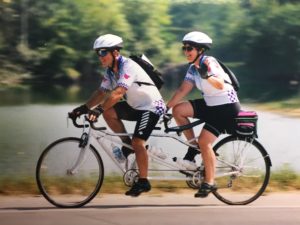
The late David Good and Kathy Good are shown on their tandem bike before David’s death from Alzheimer’s. (photo/courtesy Kathy Good)
Stanford University researchers have found that Alzheimer’s caregivers have a 63 percent higher mortality rate than non-caregivers, with 40 percent dying from stress-related disorders before the patient dies.
Those numbers aren’t lost on Kathy Good, whose husband, David Good, a judge in eastern Iowa, was diagnosed with early onset Alzheimer’s at age 56. The two often rode their tandem bike and David, an outdoorsman, ran two half-marathons after his diagnosis.
Kathy took care of her husband at their Cedar Rapids home for eight years before he moved into a care center. He died in 2015.
Even with her social work background, she often felt overwhelmed. The stress, she said, likely contributed to health conditions she developed, including rheumatoid arthritis.
Financial burdens of the disease
Kathy now uses what she learned as a caregiver to direct the Family Caregivers Center of Mercy, which opened in Cedar Rapids nearly two years ago as a resource for family caregivers.
Financial concerns are among the many burdens the families carry, she said, and they have escalated, of late, with worries about the future of health care funding.
Anne Scherer, a retired accountant who tends to be a planner, has been running the numbers to try to determine what the future holds for her and her husband, Alan, 76, who was diagnosed with Alzheimer’s at age 68. The two live in West Des Moines, where Anne takes care of her husband at home.
Alan Scherer, former chief financial officer at the Duluth News Tribune in Minnesota, had a long career in finance, but his forgetfulness ― misplacing keys or his wallet and repeating stories ― became progressively more troubling, his wife said.
When he left a carton of milk in a cabinet, rather than the refrigerator, she knew something was wrong.
After Alan was diagnosed with Alzheimer’s in 2010, Anne tried to keep up with the tax firm she owned, even bringing him to work with her. She gave it up in 2015.
“It was not what I wanted to do,” she said of retirement. “But I became a caretaker, and that’s No. 1 ― making sure every moment we live in has meaning for him.”
The two still go bowling, to movies and to baseball games ― Alan coached their three sons as youths. They sing together and attend programs, such as the “Memory Cafe” through the Alzheimer’s Association and WesleyLife, a nonprofit that offers services for older adults. Participants with dementia and their caregivers share experiences and laughs at the social Memory Cafe events.
Some people ask why she takes her husband places he won’t remember.
“People say it’s not remembered, but I remember,” she said.
Physically, Alan is healthy, but he needs help with everyday chores such as bathing and getting dressed. “Nothing is independent,” she said.
During an interview, he couldn’t come up with the word for “ring,” when Anne pointed to the jewelry on her hand. He retains a sense of humor, though, which has helped their marriage.
When asked to demonstrate his singing skills, he quipped, “I am good.”
Anne said she worries about what will happen when she can no longer care for her husband at home. Funding has been cut for one of the programs where Alan spent time twice a month with others diagnosed with Alzheimer’s, giving Anne a few hours off from the 24/7 care.
They cannot afford private-pay nursing facilities, which can cost more than $100,000 annually. When Alan finally requires nursing home care, they would spend through their savings and then rely on Medicaid, she said.
“If you look at the end-stage, you couldn’t handle it at home,” she said of the lifting and other daily tasks. “I just don’t know what we’ll do. I had it so planned out.”
This story was produced by the Iowa Center for Public Affairs Journalism-IowaWatch.org, a non-profit, online news Website that collaborated with HuffPost for this report.
See charts that track Alzheimer’s state-by-state and photos of Anne and Alan Scherer at home at IowaWatch and Huffington Post.
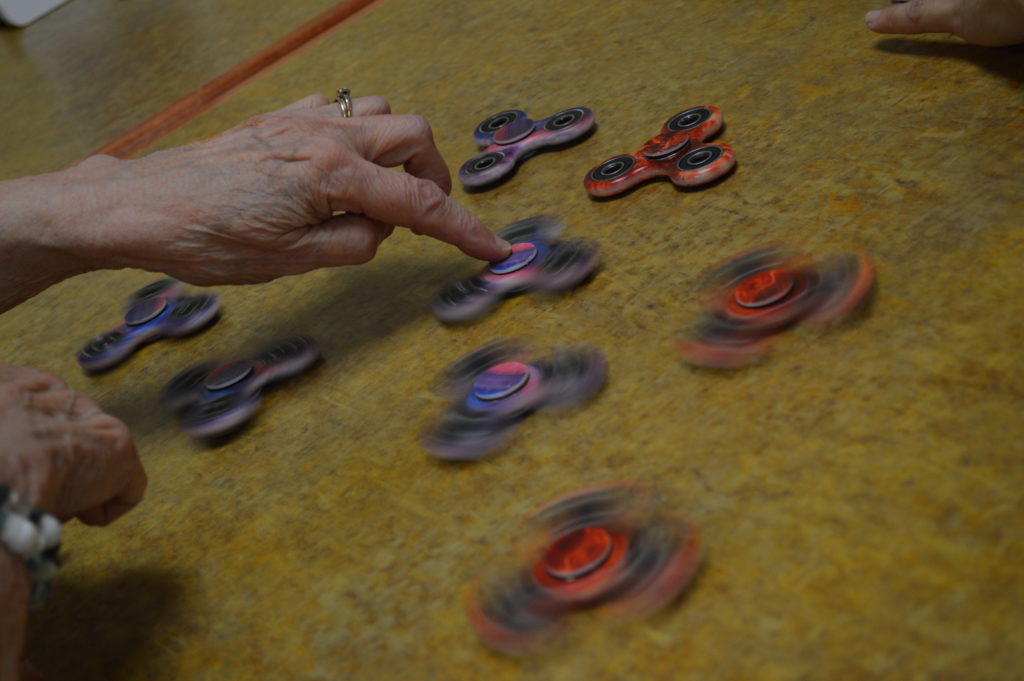
Residents of Arbor Springs in West Des Moines, Iowa, play with fidget spinners. The facility is dedicated to dementia patients. (photo/Cindy Hadish)
Care centers at crossroads in Alzheimer’s care
By Cindy Hadish
A shortage of workers trained to treat people with Alzheimer’s, coupled with a shortage in nursing homes that accept Alzheimer’s patients are among concerns in treating Alzheimer’s patients.
Already, some patients must go out of state because Iowa doesn’t have enough nursing homes that will take Alzheimer’s patient who exhibit certain behaviors, said Brandon Geib, past policy director for the state’s Alzheimer’s Association.
Iowa’s strict interpretation of guidelines by the Centers for Medicare and Medicaid provide for hefty fines against nursing homes where a patient strikes out at another patient or staff member, so many facilities simply refuse to take dementia patients, he said.
Families of those patients are forced to take their loved one to an out-of-state facility, making it difficult to visit, Geib said, and some have had to take patients back into their homes, even when they cannot adequately provide for their care.
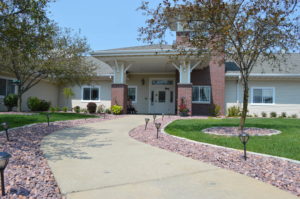
Arbor Springs, in West Des Moines, Iowa, was built as a community dedicated to dementia care. (photo/Cindy Hadish)
Not all care centers have prohibitions against dementia patients. Some, in fact, are designed specifically for people diagnosed with Alzheimer’s.
One example is Arbor Springs, in West Des Moines, where residents live in six small “neighborhoods,” each with its own living room, dining room and outdoor courtyard. Just nine residents live in each neighborhood.
A community kitchen attached to each dining room allows snacking at any time of day, and is designed to be just like a kitchen at home. Families are encouraged to personalize the cozy private bedrooms of their loved ones.
Traditional nurses stations are notably absent, in keeping with the homelike feel of Arbor Springs, and residents can use iPads to play games that help with their memory and word recognition and have iPods with personalized playlists of music.
Monica Kuehl, director of marketing, said the music enables those living with dementia to reconnect with the world through music-triggered memories.
“It’s very therapeutic,” she said.
Two cats roamed the halls of Arbor Springs on a recent visit, part of a program with an animal rescue organization in which the cats live on-site to interact with the residents.
Barb Blevins of West Des Moines leads a cooking club in which residents can help make treats, such as trail mix, or help with baking pies, while Blevins asks them to share their memories about the tasks.
“It’s amazing what they can remember,” she said.
Her mother-in-law, Enid Blevins, 96, a retired college professor, has lived at Arbor Springs since Dec. 31, 2016, and seems to be happy there, she noted.
The cutting-edge amenities come at a price: currently $290 per day, or nearly $106,000 annually, and all residents are private-pay.
Blevins said the cost is worth it.
“It’s her money,” she said. “She and her husband worked hard and saved all their life and she deserves this.”
Blevins added that she is a firm believer in God, “and this is God’s plan.”

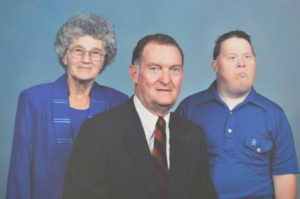


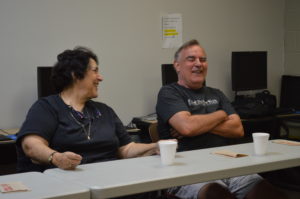
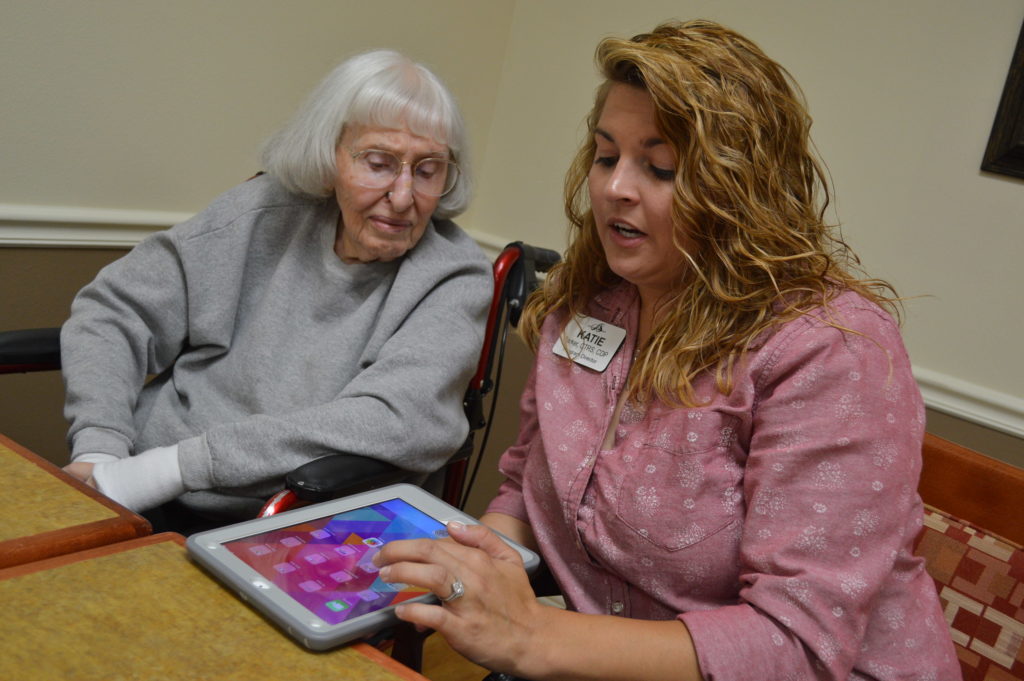
Cindy, I’m curious about the voting preferences of this population and were they aware of their reliance on Obamacare. I think that would be a great follow up story.
That’s a good question, Bernhard. Iowa voted for Trump, but it’s hard to say how the families of those 64,000 Iowans voted.